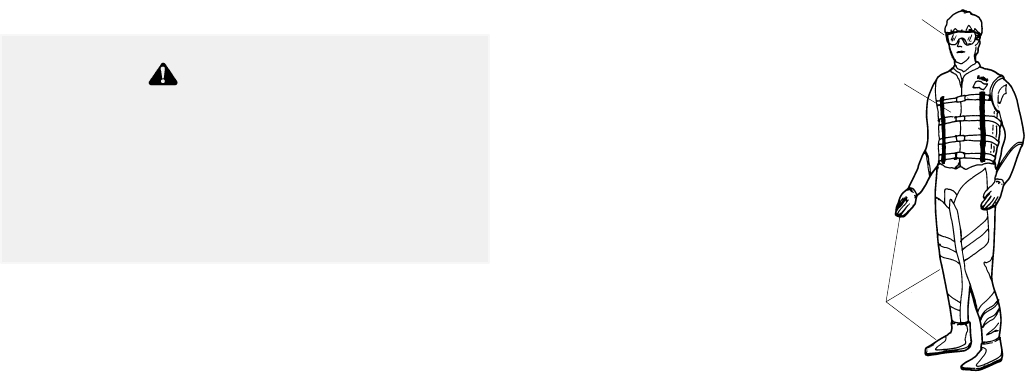
16
SAFETY
Operator Safety
Safe Riding Gear
Always wear protective clothing when operating or
riding a personal watercraft. Consider attaching a
whistle to your lanyard to summon help in emergency
situations.
1 - Personal Floatation Device
The operator and passenger must always wear an
approved personal flotation device (PFD) at all times
to prevent accidental drowning. Polaris recommends a
vest-type PFD (U.S. Coast Guard type 1, 2, or 3).
NOTE: The seat of the watercraft is not a PFD.
2 - Eye Protection
Wear adequate eye protection to protect
against water spray, sun, insects and
other objects. To protect prescription
eyewear and sunglasses against loss
or damage, wear goggles that fit
securely over them.
3 - Suit/Shoes/Gloves
We recommend that all riders wear
a wet/dry suit and watercraft
shoes to protect against the force of
the water, as well as exposure and
unknown hazards in the water, such
as debris and hidden objects. Riding
gloves may also be considered.
NOTE: A helmet may provide
increased personal injury protection in some situations,
such as impact with the watercraft or during a collision
with other watercraft or an obstacle. However, a helmet
may not provide adequate protection against all
foreseeable impacts and may aggravate some injuries.
For example, if a rider falls off a moving watercraft
while wearing a helmet, the helmet could catch the
water and cause choking, severe and permanent
injuries or death. A helmet may also increase the
possibility of an accident if it reduces your visibility or
ability to hear or if its weight contributes to fatigue.
Failure to wear protective clothing while operating
a watercraft can result in serious injury. The jet
pump emits a forceful stream of water that can
injure body orifices. Falling off the watercraft while
operating at higher speeds may also lead to injury.
Always wear the recommended protective gear
while riding on any watercraft.
WARNING
2
1
3


















